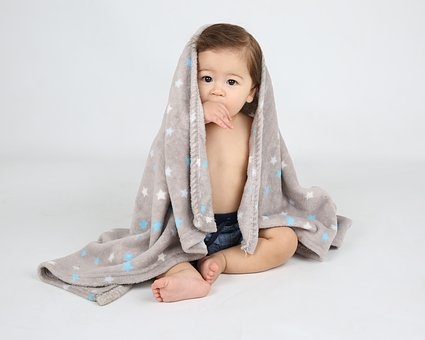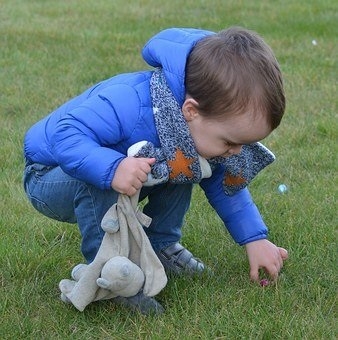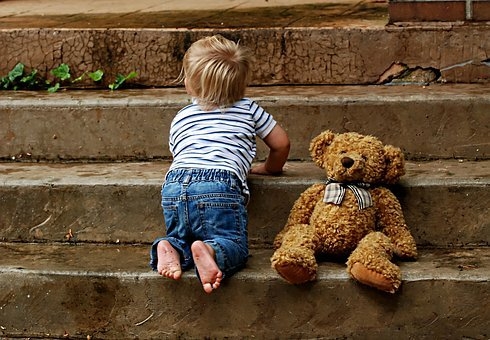When can the comfort blanket go?
January 15th, 2021
1172 Views

Many children have a comfort blanket or similar that they are very attached to – both physically and emotionally. The blanket may well have been given a pet name such as ‘lo-lo’, ‘Mimi’ or similar and removing the blanket long enough to get it washed can be more than tricky and the house gets turned upside down every time the blanket goes missing.
The subject of comfort objects is a hotly debated one and some people feel that it is not good for a child to have such a thing and that it can have a detrimental effect. Interestingly, one in three adults still have a beloved old toy tucked away in a cupboard and many also have a favourite jumper that they feel they just have to wear! Parents are often concerned when their five year old still wants a dummy and are alarmed when their teenager will not part with their nursery blanket, but careful handling of both situations can be successful.
The key question is what is a sensible age for your child to say ‘goodbye’ to their blanket?
Importantly, although at first paediatricians felt that the need for transitional objects was a sign of poor attachment between the child and their mother, it has been found that the exact opposite is in fact true. The object is a reminder of love and security to a child – not a replacement for it.
The subject of comfort objects is a hotly debated one and some people feel that it is not good for a child to have such a thing and that it can have a detrimental effect. Interestingly, one in three adults still have a beloved old toy tucked away in a cupboard and many also have a favourite jumper that they feel they just have to wear! Parents are often concerned when their five year old still wants a dummy and are alarmed when their teenager will not part with their nursery blanket, but careful handling of both situations can be successful.
The key question is what is a sensible age for your child to say ‘goodbye’ to their blanket?
Why does a child love something to hold?
The fact is that all babies are born with a need for love and security. Usually when a baby is about three months old they start to rely on what is called a ‘transitional object’. This object can be a dummy, toy, blanket or muslin square and is usually a temporary attachment that acts as a bridge between the security they get from their mother and the new situation they find themselves in – such as being across the room from her. Their need for such an item usually develops at about this age because in the first few weeks they will have been cuddled and carried pretty well non-stop.Importantly, although at first paediatricians felt that the need for transitional objects was a sign of poor attachment between the child and their mother, it has been found that the exact opposite is in fact true. The object is a reminder of love and security to a child – not a replacement for it.

Why blankets are popular
With transitional object, babies feel comforted, secure and learn how to settle themselves. Many babies love blankets because they are warm and snug, but also because they often have a smooth satin edge, which young children love to feel and suck. Transitional objects are usually ones that can be sucked - thumbs are another popular object, this one will be harder to take away (haha!).The first problem is washing the blanket.
In the early days, the main problem is being able to part your child from their treasured blanket (or toy) for long enough to get it successfully washed and dried. This can be quite a challenge, if your child will not accept a second one as a substitute. It is something that needs to be done regularly to try and keep the blanket as clean as possible and also in good repair.
The second is when to say goodbye
Sometimes when a toddler loses their blanket and does not want a replacement, they decide that they are able to do without their blanket. On many occasions though, a substitute must be found – quickly. Once your child is approaching the age that they will be starting nursery school, it is a good idea to plan ahead and encourage them to leave their blanket safely on their bed and only use it at bedtime.Sometimes, a little encouragement is needed with this and using a reward chart can prove successful. Simply removing or banning the blanket is not an option as this will cause great distress.
Some children never stop using their blanket.
Whilst most children are able to enjoy their day without their comfort blanket, many continue to rely on their blanket at night, until they are teenagers and beyond. The reason is that the blanket (or toy) is a symbol of warmth and security and for older children this can help them to feel less stressed and anxious. A comfort blanket can be soothing and even its smell can calm an anxious child.A comfort blanket is treasured by many children of all ages. It is important to try and keep it as clean as possible and to wean your child off using it during the day in preparation for them going to nursery school. However, if your child is happy to keep it for bedtime use only, it is best that they decide when they are ready to say the final farewell to their treasured blanket...
Happy Snuggles!
Chrissie x

